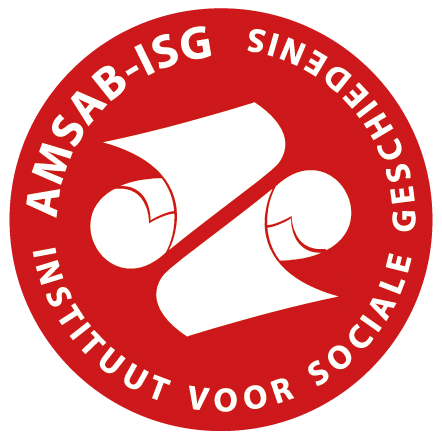- 1892, 27 juni
Cami Stone wordt als Wilhelmine Camille Honorine Schammelhout geboren in Vilvoorde, België. - 1895, 16 december
Sasha Stone wordt als Aleksander Serge Steinsapir geboren in Sint-Petersburg, Rusland. - 1913
Sasha runt een bedrijfje voor kunstsmeedwerk in New York onder de naam Alexander Stone, nadat hij eerder voor de beeldhouwer Hunt Diederich heeft gewerkt. - 1914-1918 Eerste Wereldoorlog
Sasha maakt zijn eerste foto’s en wordt in het Britse leger gerekruteerd als copiloot en luchtvaartinstructeur. - 1916
De intellectuele en artistieke dadabeweging ontstaat in Zürich onder impuls van Tristan Tzara. - Rond 1918
Sasha studeert tekenen en schilderkunst aan een school in Bellevue, dicht bij Parijs. Hij zet een kleine beeldhouwwerkplaats op. - 1918
Cami verhuist naar New York, waar ze een import- exportbedrijf opricht. - 1918-1933
De Weimarrepubliek, een nieuw politiek regime, komt op in Duitsland. - 1919
Walter Gropius richt in het Duitse Weimar het Bauhaus op, een school voor architectuur en toegepaste kunst. - Rond 1920
De artistieke beweging Nieuwe Zakelijkheid ontstaat. De eerste officiële tentoonstelling wordt in 1925 georganiseerd in de Kunsthalle in Mannheim, Duitsland. De artistieke beweging Nieuwe Fotografie ontstaat en is gebaseerd op de principes van het Bauhaus. - 1920, juni-juli
Het eerste internationale dadasalon vindt plaats in Berlijn, met John Heartfield als officiële fotomonteur. Rond 1921
Sasha verhuist naar Berlijn, waar hij studeert bij de beeldhouwer Alexander Archipenko. - 1924
Cami en Sasha Stone ontmoeten elkaar en richten Atelier Stone toegewijd aan fotografie op aan de Kurfürstenstrasse 13 in Berlijn. De Stone exposeren hun foto’s in de Große Berliner Kunstausstellung, in de afdeling Novembergruppe, en in de Juryfreie Kunstschau in Berlijn. - 1925
László Moholy-Nagy publiceert het boek Malerei, Fotografie, Film. - 1925-1926
De Stone lijken uitsluitend samen te werken met de Duitse uitgeverij Ullstein, die titels uitgeeft als Uhu, Die Dame en Der Querschnitt.TIJDEN - 1927
De Stone verhuizen naar een nieuwe, grotere studio aan de Kaiserin-Augusta-Strasse 69. - 1928
Sasha exposeert op het eerste Salon indépendant de la photographie in Parijs samen met Berenice Abbott, Germaine Krull, André Kertész, Man Ray en Eugène Atget. - 1929
Cami en Sasha nemen deel aan de tentoonstelling Fotografie der Gegenwart in Essen en Berlijn. Samen met Umbo, Heartfield, Lersky en Moholy-Nagy nemen de Stone deel aan de Internationale Ausstellung des Deutschen Werkbunds Film und Foto (FiFo) in Stuttgart en Berlijn. - 1929
Man Ray en Lee Miller perfectioneren de solarisatie in de fotografie. Tegelijkertijd met de FiFo publiceert Werner Gräff Es kommt der neue Fotograf!, waarin hij de belangrijkste principes van de fotografische avant-garde uiteenzet geïllustreerd met beelden van de Stone. - 1930
De Stone nemen deel aan drie tentoonstellingen in Duitsland, waaronder Das Lichtbild in München. - 1931, september
De Stone verhuizen van Berlijn naar Brussel. Tussen 1931 en 1939 wonen ze achtereenvolgens in de Napelsstraat 18 (Cami’s familiehuis), de Kroonlaan 278 en de Charleroise Steenweg 43. Opening van ‘Studio Stone’. - 1931
De Duitse filosoof Walter Benjamin, een vriend van Sasha Stone, publiceert Kleine Geschichte der Photographie, waarin hij Sasha citeert. - 1932, oktober
De Stone nemen deel aan de Nationale en internationale tentoonstelling der fotographie aan Fotoclub Vooruit in Gent, samen met François Kollar en László Moholy-Nagy. - 1932, 27 november
De Stone maken enkele van de verkiezingsaffiches van de Belgische Werklieden- partij. - 1932, juli
De Exposition internationale de la photographie vindt plaats in het Paleis voor Schone Kunsten in Brussel. Cami is er samen met Victor Hennebert vertegen wordigen van de Belgische afdeling. - 1932, 27 november
Tijdens de Belgische- parlementsverkiezingen wint de Belgische Katholieke Partij, op de voet gevolgd door de Belgische Werkliedenpartij - 1933, juni
De Stone stellen de serie ‘Nus’ (naakten) tentoon in het Maison d’Art in Brussel. - 1933, juni – juli
Exposition internationale de la photographie et du cinéma in het Paleis voor Schone Kunsten in Brussel. De Stone presenteerde twee “fotografische panelen”. - Januari 1933
Adolf Hitler wordt benoemd tot kanselier van Duitsland. - 24 mei 1936
tijdens de Belgische parlementsverkiezingen krijgt de Belgische Werkliedenpartij de meeste stemmen. - Begin 1939
Cami en Sasha gaan uit elkaar en zetten Studio Stone stop. - 1939
Cami trouwt met José Stork, een werknemer van Studio Stone. Sasha trouwt met de Nederlandse Lydia Edens. - 1940, mei
De Joodse Sasha vlucht met Lydia, hun zoon Serge (geboren in 1939), en Michelline de Keuwer, secretaresse van de studio, voor de Duitse opmars. Ze vestigen zich in Villelongue- de-la-Salanque bij Perpignan in Frankrijk. Op 6 augustus sterft Sasha in het ziekenhuis van Perpignan aan longtuberculose. - 1940
Lydia Edens en Serge vluchten naar Nederland. - 1939-1945
Tweede Wereldoorlog: tijdens de oorlog blijft Cami werken als zelfstandig fotograaf - 1948
Cami opent fotowinkel Photo Jeunesse in Brussel. Ze koopt en verkoopt fotoapparatuur en kunstfoto’s’. De winkel sluit in het begin van de jaren 1950. - 1975, 3 maart
Cami Stone overlijdt na de laatste jaren van haar leven te hebben gewerkt als secretaresse van een medisch-sociale dienst voor buitenlanders in België
Voor de informatie voor deze tijdlijn, zie vooral KERBS D., MAASWINKEL P., ‘Sasha Stone. Randbemerkungen zum Lebensweg und Lebensende eines staatenlosen Fotografen‘, in Fotogeschichte, 1990, nr. 37, p. 37-53; HAMMERS B., Sasha Stone sieht noch mehr. Ein Fotograf zwischen Kunst und Kommerz, Petersberg, Michael Imhof Verlag, 2014.





